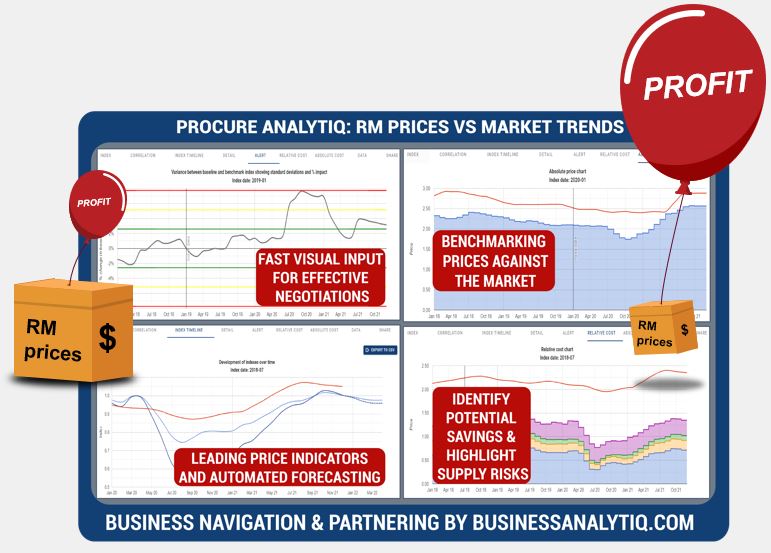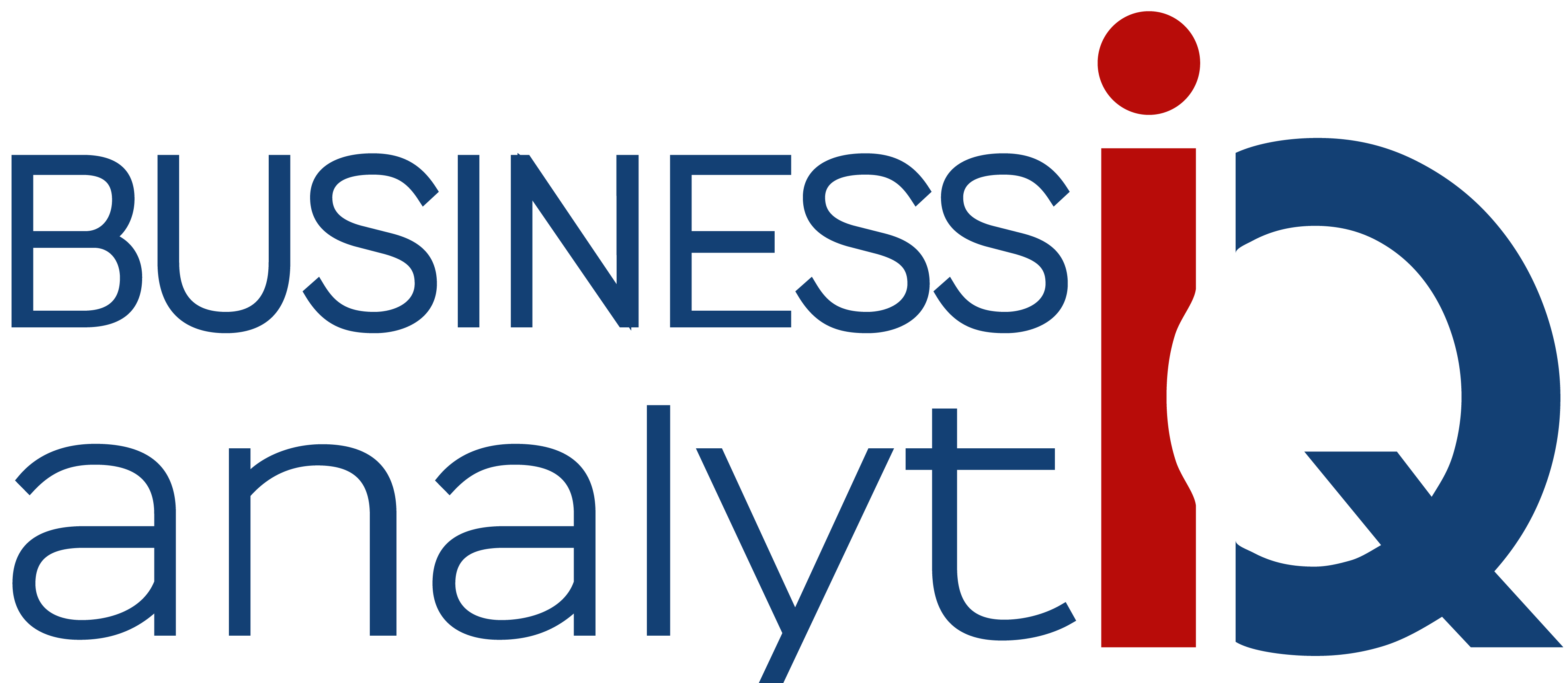Isobutanol price April 2024 and outlook (see chart below)
- Europe:US$1.24/KG, unchanged
- Northeast Asia:US$1.11/KG, -3.5% down
Business Analytiq assumes no responsibility or liability for any errors or omissions in the content of this site. The information contained in this site is provided on an “as is” basis with no guarantees of completeness, accuracy, usefulness, or timeliness.
Isobutanol price index
This post is a summary of the Isobutanol/n-Butanol price developments. The price developments of Isobutanol/n-Butanol alcohol are expressed in US$ prices converted FX rates applicable at the time when the price was valid. Isobutanol/n-Butanol price index developments are calculated from multiple separate sources of data to ensure statistical accuracy.
The outlook for Isobutanol/n-Butanol prices, on the second tab, is generated from different inputs including:
- Very recent price developments of immediate cost drivers of Isobutanol/n-Butanol prices
- Recent price developments of underlying feedstocks which drive the price of Isobutanol/n-Butanol
- Market futures for both cost drives and feedstocks of Isobutanol/n-Butanol prices
- Adjustment of current supply/demand imbalances in the Isobutanol/n-Butanol market
- Longer term trends in likely demand conditions
Further information on the Isobutanol price chart
What is isobutanol
Isobutanol is an organic chemical compound that is a type of alcohol. It is a clear, colorless liquid with a characteristic odor and is used as a solvent, a fuel, and in the manufacture of various chemicals. Isobutanol is a secondary alcohol, which means it has a hydroxyl group (-OH) attached to a carbon atom that is bonded to two other carbon atoms.
In fuel applications, isobutanol is blended with gasoline to increase the octane rating and reduce emissions. It can also be used as a direct replacement for gasoline in vehicles designed to run on higher blends of ethanol.
In the chemical industry, isobutanol is used as a starting material for the production of various chemicals, including isobutyl acetate, which is used as a solvent in the production of paints and coatings.
How is isobutanol produced
Isobutanol is typically produced through a fermentation process that utilizes microbes, such as yeast or bacteria, to convert sugar or starch into alcohol. The specific strains of yeast or bacteria used in the fermentation process are designed to produce isobutanol as the primary product.
The process of producing isobutanol typically involves the following steps:
Raw Material Preparation
The first step involves preparing the raw materials, which typically consist of sugar or starch. These raw materials are converted into simple sugars, such as glucose, through a process known as hydrolysis.
Fermentation
The simple sugars obtained from the raw materials are then fermented by the yeast or bacteria to produce isobutanol and other byproducts, such as carbon dioxide and other alcohols. The conditions of the fermentation, such as temperature, pH, and nutrient levels, are carefully controlled to optimize the yield of isobutanol.
Distillation
The fermented mixture is then distilled to separate the isobutanol from the other byproducts. The isobutanol is then purified and concentrated to produce the final product.
In addition to the fermentation process, isobutanol can also be produced through chemical synthesis, although this method is less common due to its higher cost and complexity. In chemical synthesis, isobutanol is produced by reacting propylene with hydrogen in the presence of a catalyst.
What is isobutanol used for
Isobutanol has a variety of uses, including:
Solvent
Isobutanol is used as a solvent in the production of paints, coatings, inks, and other chemicals due to its high solvency and low volatility.
Fuel
Isobutanol is used as a fuel, either alone or blended with gasoline, diesel, or other fuels. When blended with gasoline, isobutanol can increase the octane rating and reduce emissions.
Chemical Intermediate
Isobutanol is used as a starting material in the production of various chemicals, including isobutyl acetate, which is used as a solvent in the production of paints and coatings.
Biodegradable Plastic
Isobutanol can be used as a feedstock in the production of biodegradable plastics.
Pharmaceuticals
Isobutanol is used in the production of certain pharmaceuticals, such as sedatives and tranquilizers, as a solvent and intermediate.
Overall, isobutanol is a versatile chemical that is used in a wide range of applications due to its unique properties and chemical characteristics.
What drives the cost of isobutanol
The cost of isobutanol is driven by several factors, including:
Raw Materials
The cost of the raw materials used to produce isobutanol, such as sugar or starch, can significantly impact the overall cost of the product. Fluctuations in the prices of these raw materials can result in changes in the price of isobutanol.
Energy Costs
Energy costs, such as the cost of electricity and natural gas, are significant factors in the production of isobutanol. Changes in energy prices can result in corresponding changes in the cost of isobutanol.
Production Capacity
The availability of production capacity and the level of competition in the market can also impact the cost of isobutanol.
Transportation Costs
The cost of transportation can also impact the price of isobutanol, as the product is often transported over long distances from the production site to the customer. Changes in transportation costs, such as changes in fuel prices or the cost of shipping, can result in corresponding changes in the price of isobutanol.
Regulations
Government regulations, such as environmental regulations and taxes, can also impact the cost of isobutanol. These regulations can increase the cost of production, which is reflected in the price of the final product.
In summary, the cost of isobutanol is influenced by a complex interplay of factors, including the availability of raw materials, energy costs, production capacity, transportation costs, and government regulations.
What are specific properties of Isobutanol
Isobutanol is a colorless, flammable, and versatile chemical with the following specific properties:
Solubility
Isobutanol is soluble in water and a wide range of organic solvents, which makes it a useful solvent for a variety of applications.
Boiling Point
Isobutanol has a boiling point of 108.3°C (226.94°F), which makes it useful as a solvent and blending component in various applications.
Octane Rating
Isobutanol has an octane rating of 113, which is higher than that of ethanol (around 105) and similar to that of gasoline. This makes it a useful blending component in gasoline to increase the fuel’s octane rating.
Viscosity
Isobutanol has a lower viscosity than gasoline, which makes it useful as a fuel blending component in gasoline.
Evaporation Rate
Isobutanol has a moderate evaporation rate, which makes it a useful solvent for a variety of applications.
Volatility
Isobutanol has lower volatility than gasoline, which makes it a useful blending component in gasoline to reduce emissions.
Biodegradability
Isobutanol is biodegradable, which makes it useful as a feedstock in the production of biodegradable plastics.
These specific properties make isobutanol a versatile chemical that is used in a wide range of applications, including as a solvent, fuel blending component, intermediate, and feedstock for the production of biodegradable plastics.
How big is the isobutanol market
The isobutanol market is growing, driven by the increasing demand for alternative fuels and solvents in various applications. According to recent market research, the global isobutanol market was valued at approximately USD 1.3 billion in 2020 and is expected to reach a value of approximately USD 2.3 billion by 2026, growing at a compound annual growth rate (CAGR) of around 10%.
The growth of the isobutanol market is driven by several factors, including the increasing demand for biofuels, the growing demand for high-performance solvents in various industries, and the increasing demand for biodegradable plastics. The increasing demand for biofuels, in particular, has driven the growth of the isobutanol market, as the product can be used as a fuel blending component or as a direct replacement for gasoline in vehicles designed to run on higher blends of ethanol.
In terms of geography, Asia-Pacific is the largest market for isobutanol, driven by the growing demand for biofuels and solvents in countries such as China, India, and Japan. The growth of the isobutanol market in North America and Europe is also significant, driven by the increasing demand for biofuels and high-performance solvents in these regions.
Overall, the isobutanol market is growing and is expected to continue growing in the coming years, driven by the increasing demand for alternative fuels and solvents in various applications.
According to https://oec.world/ :
N-butyl alcohol are the world’s 2563rd most traded product.
In 2020, the top exporters of N-butyl alcohol were South Africa ($117M), Chinese Taipei ($108M), Malaysia ($60.9M), Saudi Arabia ($60.6M), and United States ($57.3M).
In 2020, the top importers of N-butyl alcohol were China ($183M), Belgium ($77.6M), Germany ($66.4M), India ($38.7M), and South Korea ($31.8M).
Further information
- Wikipedia for general, history, production and usage information
- PubChem for chemistry and property information
Business Analytiq
BE THE FIRST TO SEE RISK AND OPPORTUNITY!
BusinessAnalytiq provides unlimited market trend data and an online tools to track market developments, key benchmarks & leading indicators.
BusinessAnalytiq leads to price visibility, better negotiations, easier budgeting and forecasting, lower raw material prices, and improved better internal and external communication. BusinessAnalytiq will decrease risk and higher profit.

Where does the data come from?
- The source of the data are exclusively public non-confidential sources. We have no access to primary data
- This the index trend of the price trend of the "product category" in general, and not a single specification of the product in particular
- The data is a combination of contract and spot pricing
- Our algorithms are set up to eliminate significant product mix impact on the reported price
- We combine public publications, import/export records, trading prices, company announcements, magazine articles, tweets, and other sources of ad-hoc public information.
- The chart shows the our best approximation of the market trend based on our algorithm interpretation of the signals
- For most indexes we have multiple sources and we focus on using statistically-correlated sources
- As a function of our automation, it is likely that recent trends will be adjusted as we discover more information. So, for example, the price trend for February 2024 will be first calculated in February 2024 and adjusted in March, April and May 2024.
- We will update the data trend as more information becomes available, and this means that recent trends will always be adjusted as we get more data available
- The algorithm will regularly revise our understanding of market trends, and indicated market trends may change
- The data is presented in US$. The UOM of measure is shown in the Index list table
- Our automated software and we do our best to create an accurate representation of the trend
Where does the data NOT come from?
- We do not purchase data from any other source and republish it.
- We will not purchase data from any other source and republish it
- We do not extrapolate trends, even for the forecast. We look for other market signals and leading indicators
What data should our company use?
- If you are making decisions driving significant share of profit, we always recommend that you buy data from the companies who invest in direct primary market access such as ICIS, amongst many others
- Our data, at best, represents an estimate of the market trend based on public information
- We have no direct access to the market, and we do not interview suppliers and customers
- Our automated analysis tools in the online software are set up to combine our data with other sources of data
- We do not recommend that you use our data for direct price mechanisms, as we may change and improve the data trends over time, including historical data
What does the quality indication in the main menu mean?
- Quality level A: Data is from a reliable and confirmed source
- Quality level B: Data is from multiple credible sources and there are no major statistical inconsistencies between them
- Quality level C: Data is from multiple credible sources and there are some statistical inconsistencies between them
- Quality level D: Data is from a single credible source, but we cannot verify the data
- Quality level E: Data is either:
- From a single source, which we consider reliable, but we cannot verify the data.
- From 2 or more sources which have some periods of contradicting trends.
- Quality level F: Data is from a single source which we consider indicatively correct, but the data is anecdotal and we cannot verify the data.
What are the disclaimers?
- We assume no responsibility or liability for any errors or omissions in the content of this site.
- The information is provided on an “as is” basis with no guarantee of completeness, accuracy, usefulness, fitness for purpose or timeliness.
- By their nature, outlooks are always uncertain
How often do we update the data?
- We aim to update the data series on the 9th and 24th of each month (but we do not always make it for each chart)
- The data for the current month and recent history are fine-tuned over time.
What are we doing to improve the data?
- We are continually improving our data collection and processing methods
- Pricing data will be updated from time to time as we improve the accuracy
- We are reviewing all data sources in the first half of 2024.
- There will be continuous fine-tuning of the trend and forecast algorithm as part of that.
- The key focus in 2024 is to add many additional indexes
How can i give feedback on the data or request for new indexes
- Feel free to contact us if you have a specific request. You can reach us via the Contact us page

